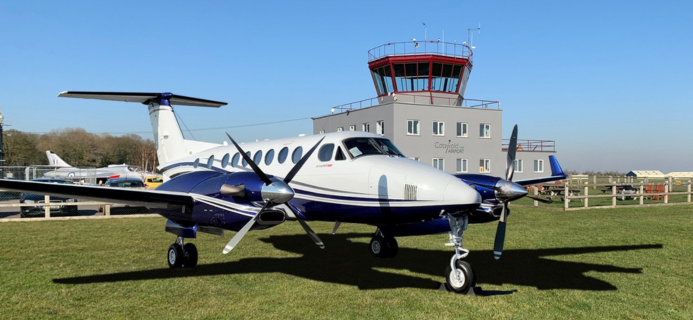
Cotswold Airport FAQs...
Below is a list of frequently asked questions and answers. Please click on the FAQ for further information relation to this question.
If you have any further queries relating to Cotswold Airport and our facilities, please contact us on 01285 771177 or ops@cotswoldairport.com, or use the form on our contact page.
FAQs
Why do planes illegally fly through a published noise abatement area? The published direction from the airport tells them not to fly over Culkerton or Kemble when taking off or landing, why are they doing this?
Noise Abatement areas published by the airport are not mandatory or enforceable. However, we remain committed to the effective management of aviation noise. These have been developed in line with Government best practice and in consultation with the Parish Councils. In fact, the airport’s measures far exceed this best practice and is part of the airports measures to mitigate, as best we can the effects of living next to a very active airport. The airspace above most of Gloucestershire and Wiltshire is classified as uncontrolled (by the Civil Aviation Authority), known as Class G airspace. This airspace starts at ground level and extends all the way up and into the airways in which passenger airliner jets travel. This allows pilots to navigate where they like in this Class G airspace and where they navigate is driven more by controlled airspace constraints (like roads in the sky), rather than features on the ground. These include, amongst others; weather conditions, operational efficiency and safety considerations.
Why are they using my house as a turn marker?
Pilots, particularly flying around our local area, are using a 1:500, 000 scale Air Chart (ground features are 100 times smaller than on a normal OS map we may use for walking). They may navigate using large ground features such as hills and valleys, the M4 and other airfields. As an example, a town smaller than Cirencester or Tetbury, will simply not feature on an Air Chart, let alone a small village or individual house. Almost all pilots these days fly using a GPS system operating through a tablet type screen displaying the Air Chart. In the main, this is more to help them navigate through the airspace (the roads in the sky), than individual ground features. Even in the circuit, the pilot mainly uses his view of the airport and other aircraft to align his aircraft safely in the circuit.
Is Cotswold Airport's plan to get holiday flights into Kemble?
No. The airport has no plans to change into a commercial passenger carrying airport. The developments at the airport are to put in a defined GPS so that business jets and those in for maintenance or salvage can follow a predetermined arrival route to land at the airport from 10 miles away, which provides certainty to other airspace users and local residents. To date, the pilots of these aircraft, whilst conforming to SERA rules of the air, have been determining their own routes, some flying around most of Wiltshire and Gloucestershire first.
How long has flying been going on at Kemble?
Cotswold Airport, formally RAF Kemble and a USAF Base has been operational for the past 82 years (since 1937). Throughout all of this period, the airport has consistently had between 25,000 and 35,000 aircraft movements per year, Records for its use in the Second World War are incomplete, but its role suggests movements significantly higher than this.
Parish Councillors and the police are often contacted by members of the public who want action taken against noisy and/or low flying aircraft or helicopters. The CAA is the relevant enforcement authority; all complaints should be reported to Cotswold Airport.
Why are those noisy planes flying low over my house and why are they not following set routes?
Aircraft Noise
Aircraft noise is generally exempted from the general noise nuisance controls. This is the case, irrespective of whether an airfield in question is small and unlicensed or a major UK airport. Generally, so long as the Rules of the Air Regulations are being observed, aircraft are protected from action in respect of trespass or nuisance. The Rules of the Air set out low flying rules in accordance with EU Regulation (EU) 923/2012 on the standardised European Rules of the Air. The Civil Aviation Authority (CAA) has some scope for exercising controls. However, such controls are usually concerned only with safety, and in any case, controlled airspace only extends around airports and along air routes, which are usually 10,000 to 12,000 feet up.
Outside controlled airspace (which is most of Wiltshire and Gloucestershire), aircraft can go anywhere so long as they abide by the Rules of the Air. The Government has powers under the 1982 Act to designate areas where aircraft are not allowed to fly, but this is usually done only on safety or security grounds, for instance over high security prisons or sensitive installations.
Not all light aircraft seen flying around are from Cotswold Airport. In addition to Oaksey Park Airfield, there are more than 15 small grass strip airfields and microlight sites within a 15-mile radius; most of these are unlicensed strips, not regulated by the CAA. Equally those aircraft could be transiting the area from airfields far away from us. Cotswold Airport is a licenced airport; within one of the most regulated industries, the airport is regulated and audited for compliance with all regulations by the CAA, as are the 6 flying schools based at the airport. The CAA’s audit of the flying schools checks their compliance with delivery of the mandated training requirements for pilots, both the flying training and the ground school examinations, which includes Air Law.
Aircraft Safety and ‘low flying’
The UK Rules of the Air take account of EU Regulation (EU) 923/2012 and the Standardised European Rules of the Air (SERA).
Low flying In general, unless they are landing or taking off, an aircraft should be 1,000 ft over a built-up area (this is large towns and cities, rather than hamlets/villages) or otherwise 500ft from people, buildings etc. It’s extremely difficult to judge aircraft height above the ground and distance from objects but if you have evidence of the height/distance, such as photographs, the airport can investigate. To enable us to trace the aircraft concerned you would ideally have its registration. For UK aircraft this is normally G- followed by four letters and is on the side and wing of the aircraft.
For low flying, these regulations state:
An aircraft must not take off or land within a congested area of any city, town or settlement except –
at an aerodrome in accordance with procedures notified by the CAA; or
at a landing site which is not an aerodrome in accordance with the permission of the CAA.
An aircraft must not land or take-off within 1,000 metres of an open-air assembly of more than 1,000 persons except –
at an aerodrome in accordance with procedures notified by the CAA; or
at a landing site which is not an aerodrome in accordance with procedures notified by the CAA and with the written permission of the organiser of the assembly.
However, there are a few other exemptions to this Rule, as set out by the CAA. Generally, an aircraft may fly at a height of less than 150 metres (500 feet) above the ground or water; or less than 150 metres above the highest obstacle within a radius of 150 metres from the aircraft. However, it must not be flown closer than 150 metres to any person, vessel, vehicle or structure except with the permission of the CAA.
Specifically on helicopters, it states that a helicopter may fly below 150 metres (500 feet) above the ground or water or closer than 150 metres to any person, vessel, vehicle or structure if it is conducting manoeuvres, in accordance with normal aviation practice, within the boundaries of an aerodrome, a permitted site, if the operator or pilot-in-command of the aircraft has the written permission of the CAA. However, when flying in accordance with this permission the helicopter must not be operated closer than 60 metres to any persons, vessels, vehicles or structures located outside the aerodrome or site.
Additionally, helicopters and small aircraft may use temporary sites for landing and taking off provided safety standards are observed. Such sites can include large back gardens, hotel grounds, or open fields (provided the owner consents) or open wasteland. Such sites do not need to be approved by the CAA: their safety for use is judged by the pilot.
Military aircraft can fly down to 250ft above the ground.
Can you fly drones or model aircraft/helicopters near the Airport
No. On 13 March 2019 the drone flight restriction zone around airports and airfields changed. The government has introduced a new rule within the Air Navigation Order stating that the 1km restriction from the airfield boundary is replaced by a restriction using the airfield’s existing aerodrome traffic zone, which has a radius of either two or two and a half nautical miles and then five kilometres by one kilometre zones starting from the point known as the ‘threshold’ at the end of each of the airfield’s runways. Both zones extend upwards to a height of 2,000 feet above the airfield. It is illegal to fly any drone (or model aircraft/helicopter) at any time within these restricted zones unless you have written permission from air traffic control at the airport or, if air traffic control is not operational, from the Airport Director. Permission is unlikely to be granted to maintain aviation safety. The map of this restricted zone is below:

